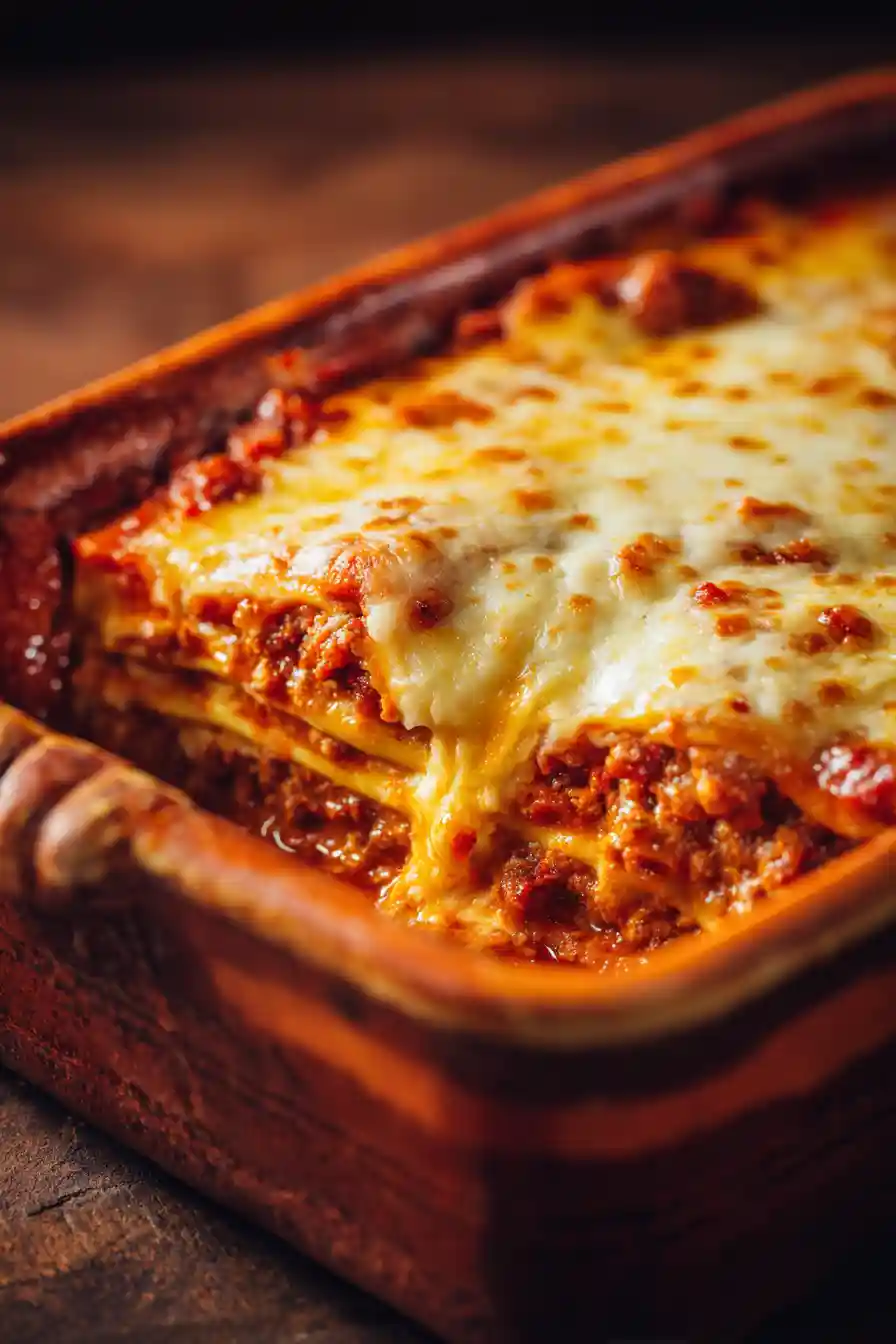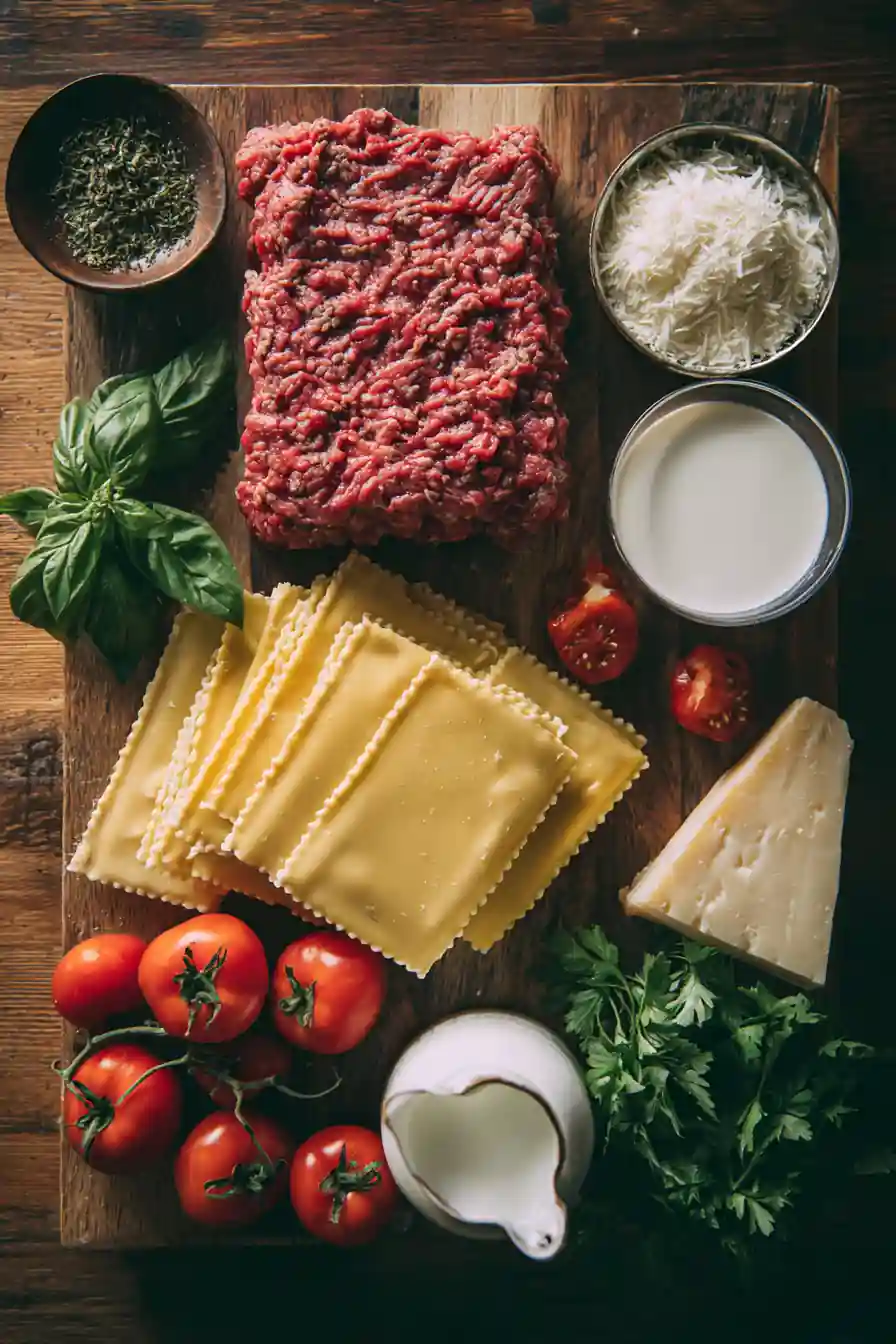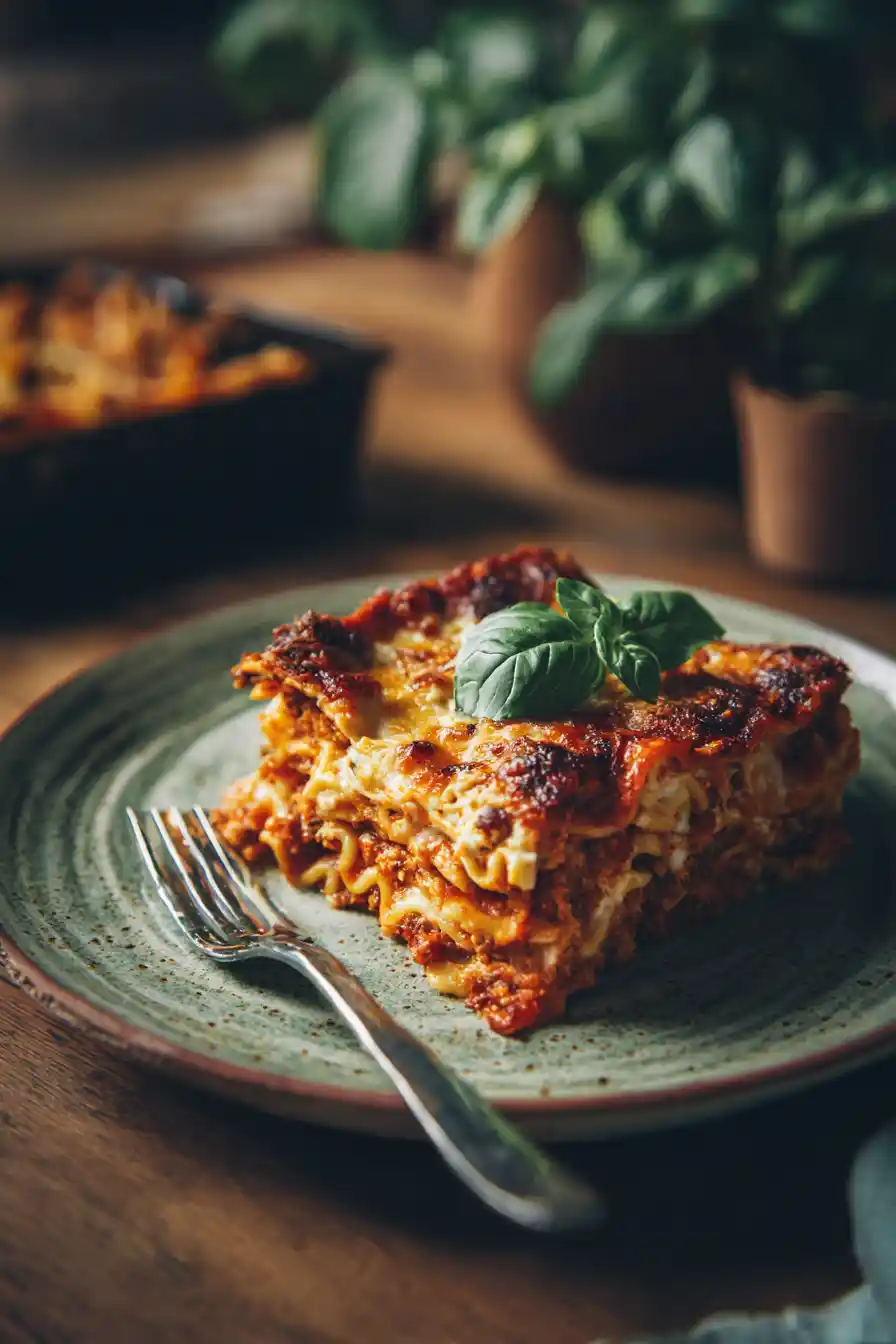
If you’re looking for a lasagna recipe that delivers rich flavor, creamy layers, and comfort in every bite you’ve just found it. This isn’t just dinner; it’s a showstopper. Picture tender pasta sheets stacked with savory meat sauce, silky béchamel, and gooey cheese, baked until golden and bubbling. Whether you’re cooking for Sunday family time or planning a crowd-pleaser for the holidays, this homemade lasagna recipe brings everyone to the table.
In this guide, I’ll show you exactly how to layer like a pro, choose the right pasta, and master that classic Italian taste. From tips on the best sauce-to-noodle ratio to the answers to your top lasagna questions, everything you need is right here.
let’s connect in pinterest
How My Family’s Lasagna Recipe Became a Staple
Where It All Began
Lasagna wasn’t something I grew up eating every week but when I did, it was an event. I still remember the first time I attempted a full lasagna recipe on my own. I was 27, had just gotten my first real apartment, and thought, “How hard could layering pasta really be?”
Spoiler: It took nearly four hours, I burned the béchamel, and my noodles stuck to the pan. But when it came out of the oven, bubbling and browned at the edges, I was hooked. From that moment, lasagna became my go-to comfort dish the kind I now make for birthdays, snow days, or just when I want to fill the house with that unmistakable Italian aroma.
Today, I’ve streamlined the process into a version that’s packed with authentic flavor but simple enough for weeknight cooking. Whether you’re going all-in with homemade pasta or grabbing boxed sheets from the pantry, this homemade lasagna recipe will guide you every step of the way.
table of contants
What Makes Lasagna So Special
Lasagna is more than just pasta and sauce. It’s a balance of texturesal dente noodles, savory meat ragù, creamy béchamel, and a layer of cheese that bubbles to golden perfection. That satisfying cross-section you see in every layered lasagna close-up is built one spoonful at a time.
If you’re craving a traditional Italian dish that looks as good as it tastes, this is it. Just like my Stuffed Shells with Ricotta and Spinach or Baked Ziti with Sausage and Marinara, this recipe delivers bold flavor, comforting texture, and dinner-table applause.
Ingredients & Choosing the Right Pasta
What You’ll Need for the Perfect Lasagna Recipe

A great lasagna recipe starts with a few quality basics: a rich tomato-based beef ragù, a velvety béchamel sauce, lasagna sheets, and cheese. For this no-pork version, I use ground beef and sometimes lean ground turkey for added balance. A slow-simmered ragù made with crushed tomatoes, garlic, onions, carrots, and Italian herbs gives it that deep, developed flavor.
The béchamel just butter, flour, milk, and a pinch of nutmeg is key to that creamy layer between the meat and noodles. I prefer it over ricotta for a more traditional Italian texture.
Here’s a peek at what you’ll need:
- 1 tablespoon olive oil
- 1 pound lean ground beef
- 1 medium yellow onion, finely diced
- 2 cloves garlic, minced
- 1 medium carrot, finely chopped
- 1 can (28 oz) crushed tomatoes
- 2 tablespoons tomato paste
- 1 teaspoon dried oregano
- 1/2 teaspoon dried basil
- 1 bay leaf
- Salt and pepper to taste
For the béchamel sauce (white sauce):
- 3 tablespoons unsalted butter
- 3 tablespoons all-purpose flour
- 3 cups whole milk
- 1/4 teaspoon ground nutmeg
- 1/2 teaspoon salt (adjust to taste)
For the layering:
- 9–12 lasagna sheets (fresh or no-boil)
- 1 1/2 cups shredded mozzarella cheese
- 3/4 cup grated parmesan cheese
The Right Order Matters
When it comes to a lasagna recipe, layering is where the magic happens. To build those clean, beautiful layers you see in every layered lasagna close-up, you need both structure and moisture balance.
Start with a spoonful of ragù at the bottom of your baking dish to keep the noodles from sticking. Then follow this order:
- Ragù sauce – spread thin and even
- Lasagna sheets – fresh or no-boil
- Béchamel – drizzle and gently spread
- Grated cheese – mozzarella and parmesan combo
Repeat the stack three to four times, finishing with sauce, béchamel, and a thick final sprinkle of cheese for that golden, bubbling top.
For even baking, use a 9×13-inch ceramic or glass dish and preheat your oven to 375°F (190°C). Bake covered with foil for 25–30 minutes, then uncover for another 15–20 minutes to brown the top. Let it rest for 10–15 minutes before slicing to help the layers hold.
Common Mistakes to Avoid
Over-saucing is the fastest way to a soggy mess. Use just enough ragù to coat each layer don’t drown it. Too much cheese on top can also burn before the inside finishes cooking, so add it in moderation.
Bubbling over? Place a baking sheet beneath your lasagna dish to catch any overflow. Trust me, it saves a lot of cleanup.
If you’ve tried my Stuffed Pasta Shells or Spinach Ricotta Manicotti, the technique here will feel familiar but this lasagna brings even more depth and crowd-pleasing flavor.
Serving, Storing & Reheating Lasagna Like a Pro

The Best Way to Serve Lasagna
When you pull your lasagna recipe out of the oven, the smell alone is enough to draw a crowd. But don’t slice too soonlet it rest at least 15 minutes. This helps the layers firm up and gives you that clean-cut presentation you see in Italian food images HD or your favorite lasagna food photography.
Serve it with a light arugula salad, crusty bread, or sautéed greens. It pairs beautifully with red wine, like Chianti or Montepulciano, or even a sparkling water with lemon.
Want to take your plating up a notch? Add a swirl of extra béchamel or a sprinkle of chopped parsley. I love presenting it alongside a small portion of pasta, as seen in many lasagna and pasta on plate restaurant photos it adds a visual contrast and gives guests a second flavor option.
How to Store and Reheat Lasagna

Storage:
Once fully cooled, wrap your lasagna tightly or store in an airtight container. It keeps in the fridge for up to 4 days.
Freezing:
Lasagna freezes incredibly well. Slice it into portions, wrap individually, and store for up to 3 months. Thaw overnight in the fridge before reheating.
Reheating:
To reheat, cover a slice with foil and bake at 350°F for 15–20 minutes. Or microwave in 1-minute intervals until heated through. A splash of water and a damp paper towel will prevent the microwave from drying it out.
What kind of pasta should I use for lasagna?
Use wide, flat lasagna sheets—either fresh, no-boil, or traditional dried pasta. Fresh sheets are tender and cook quickly, while no-boil noodles are convenient and soften as they bake. Just make sure you use enough sauce if going no-boil.
How do I layer a classic lasagna recipe?
Start with a thin layer of meat sauce at the bottom of your baking dish. Then layer pasta, meat sauce, béchamel (white sauce), and cheese. Repeat for 3–4 layers and finish with more béchamel and cheese on top before baking.
Which pasta is traditionally used in Italian lasagna?
Traditional Italian lasagna—especially Lasagna Bolognese—uses egg-based fresh pasta sheets made with semolina flour. These are light, tender, and absorb the sauces beautifully. You can also use high-quality dried sheets if fresh isn’t available
Conclusion
Lasagna is more than a mealit’s a layered celebration. With the right sauce, pasta, and technique, even a pork-free version can deliver rich, authentic Italian flavor. This lasagna recipe offers everything you love about traditional Bolognese, without the complexity. Whether you’re cooking for a crowd or stocking the freezer, it’s comfort food at its bestgolden, cheesy, and made with heart.

Classic Beef Lasagna (No Pork)
Ingredients
Equipment
Method
- In a large skillet, heat olive oil over medium heat. Add onion, garlic, and carrot. Cook until soft.
- Add ground beef and cook until browned. Drain excess fat if needed.
- Stir in tomato paste, crushed tomatoes, herbs, salt, and pepper. Simmer for 30 minutes.
- Meanwhile, make béchamel: melt butter in a saucepan, whisk in flour to form a roux.
- Gradually add milk, whisking constantly until thickened. Add nutmeg and salt.
- Preheat oven to 375°F (190°C). Spread a spoonful of meat sauce in a 9×13 dish.
- Layer pasta sheets, meat sauce, béchamel, and cheese. Repeat 3–4 layers.
- Top with remaining béchamel and cheese.
- Cover with foil and bake 30 minutes. Remove foil and bake 15 more until golden.
- Let rest 10–15 minutes before slicing and serving.
Nutrition
Notes
Tried this recipe?
Let us know how it was!for more recipes follow this recipe https://benizzrecipes.com/crispy-hash-brown-egg-nests/

